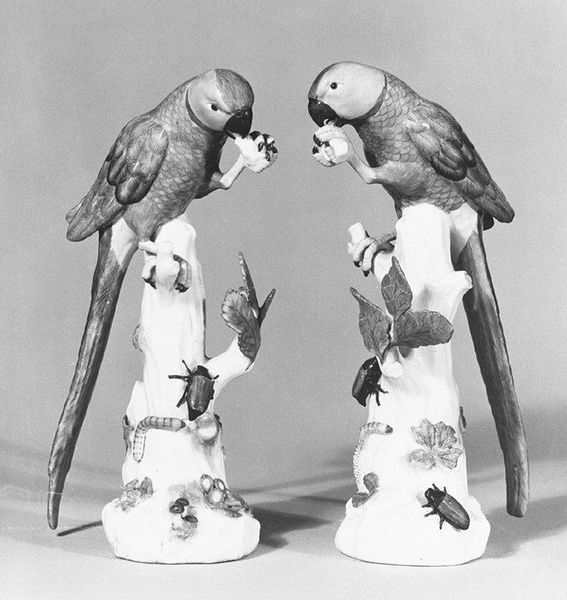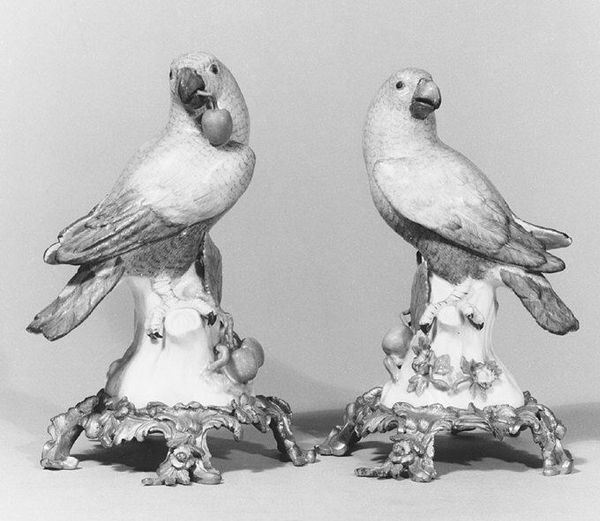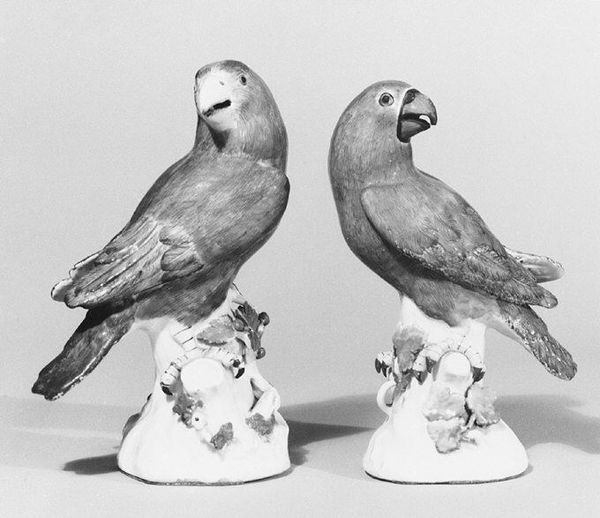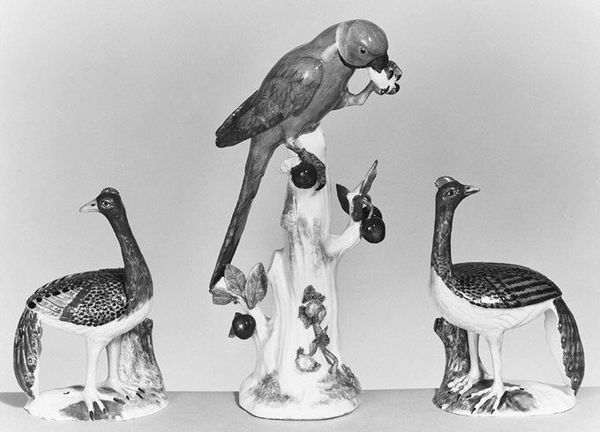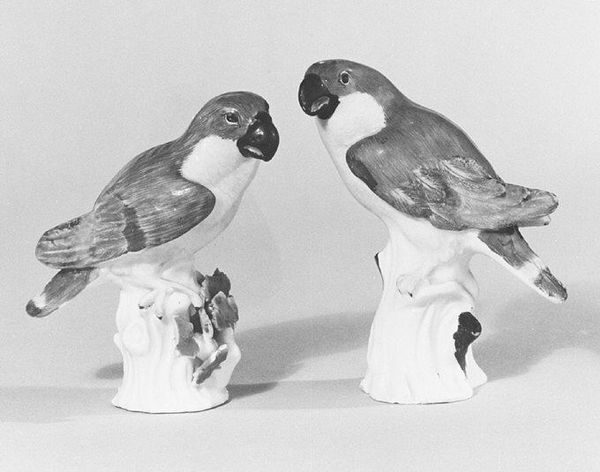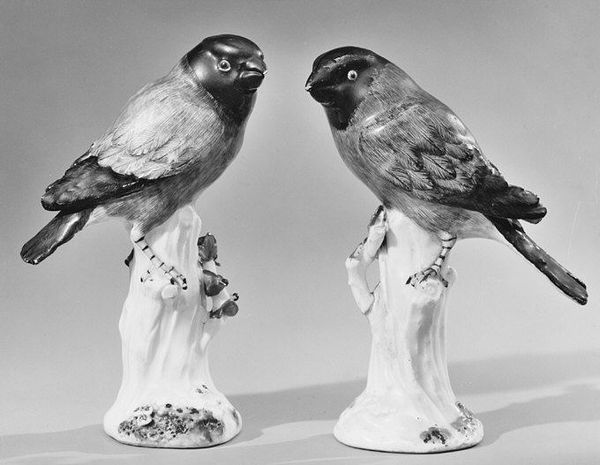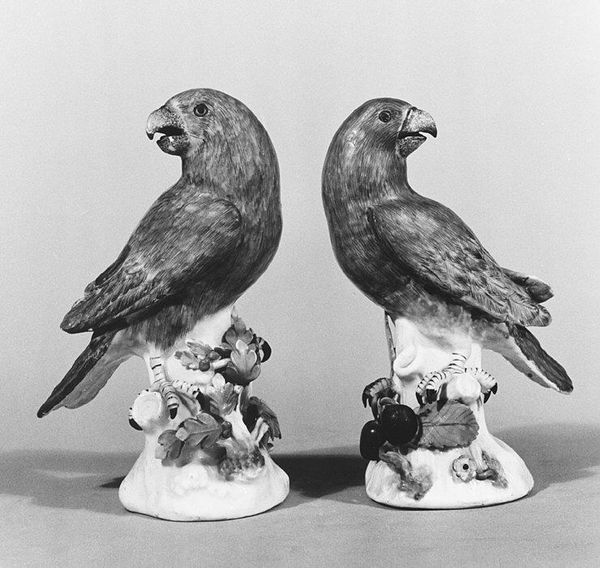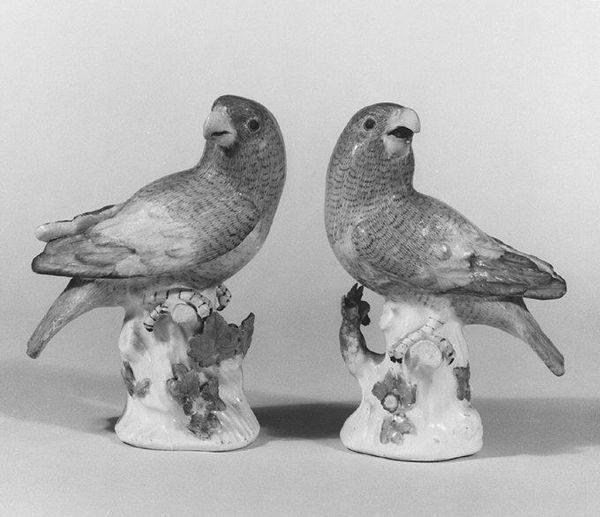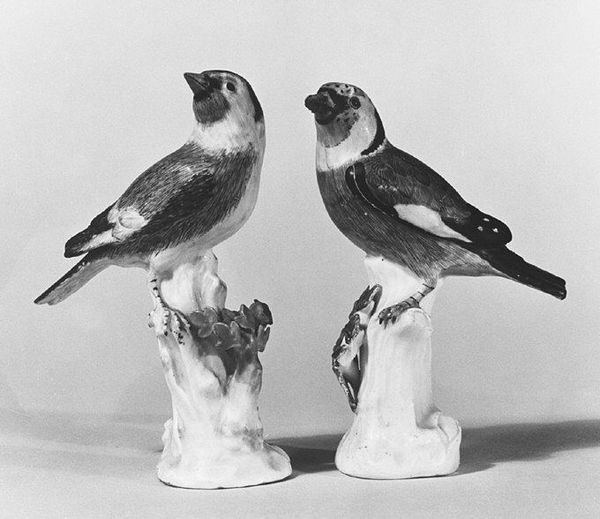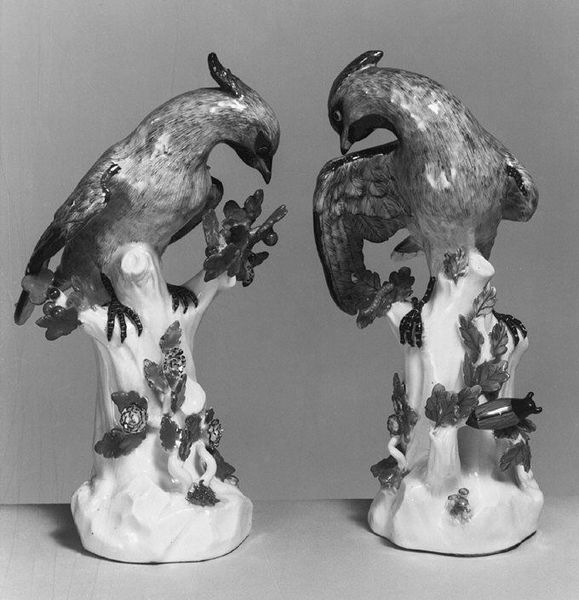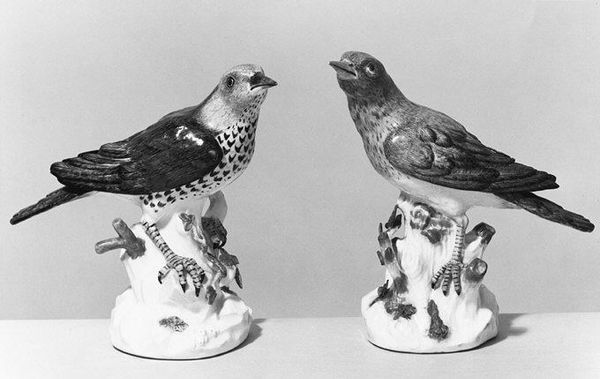
ceramic, porcelain, sculpture
#
sculpture
#
ceramic
#
porcelain
#
sculpture
#
decorative-art
Dimensions: Height: 11 1/2 in. (29.2 cm)
Copyright: Public Domain
Editor: Here we have a pair of porcelain parakeets, created around 1741 by the Meissen Manufactory. They look so delicate perched on these little tree stumps! They almost seem like they’re part of a playful aristocratic game. What do you see when you look at these sculptures? Curator: They’re more than decorative, aren’t they? We should consider the political context. These weren't just charming figurines. In the 18th century, porcelain was known as "white gold". Owning such items was a display of wealth and power, deeply entangled with colonialism. Where did the materials come from, and who made them? Who was excluded from such luxuries? Editor: That's a great point. So these parakeets, beautiful as they are, also speak to broader inequalities of the time. The exoticism of the birds themselves plays into that too, right? Curator: Absolutely. Exotic animals were status symbols, suggesting global reach. The act of portraying them in porcelain further elevates them, masking the exploitative systems that facilitated their display. They embody a narrative of conquest and control. Editor: I hadn't considered the darker implications before. It’s fascinating how a seemingly harmless object can reveal so much. Curator: Precisely! Art, even decorative art, never exists in a vacuum. Considering its historical moment reveals layers of meaning we might otherwise miss. What will you take away from today's discussion? Editor: That even the most innocent looking artworks can be tied to difficult histories of power and exclusion, and we must always question the narratives they present. Thanks for enlightening me!
Comments
No comments
Be the first to comment and join the conversation on the ultimate creative platform.
